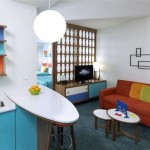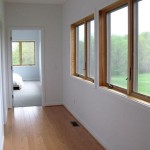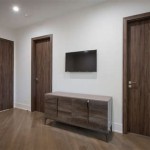Moroccan Interior Design: A Blend of Culture and Craftsmanship
Moroccan interior design is a captivating fusion of rich cultural heritage, intricate craftsmanship, and a vibrant aesthetic that seamlessly blends traditional elements with modern sensibilities. Drawing inspiration from centuries-old architectural traditions and the country's diverse artistic heritage, Moroccan interiors evoke a sense of warmth, elegance, and timeless beauty. Characterized by intricate patterns, vibrant colors, and luxurious textures, Moroccan design offers a unique and alluring approach to home decoration.
Key Elements of Moroccan Interior Design
Moroccan interiors are renowned for their distinctive features that create a captivating and inviting atmosphere. These key elements form the foundation of the design aesthetic:
1. Intricate Tilework:
Zellige, the iconic Moroccan mosaic tile, is a defining element in Moroccan interior design. These hand-cut, glazed ceramic tiles are meticulously crafted in various geometric patterns and vibrant colors, covering walls, floors, and even furniture. The intricate designs and the interplay of light and shadow on the tiles create a mesmerizing visual spectacle. Zellige tiles are often used to create intricate geometric patterns, such as starbursts, octagons, and diamonds, adding a touch of artistry and elegance to every space.
2. Rich Fabrics and Textiles:
Moroccan interiors embrace the use of luxurious fabrics and textiles, adding warmth, texture, and visual interest. From hand-woven Berber rugs with intricate patterns to sumptuous silk cushions and throws, these textiles are not only aesthetically pleasing but also reflect the heritage and craftsmanship of the region. Silk, velvet, linen, and wool are frequently used, adding a touch of opulence and sophistication. The use of vibrant colors, such as deep reds, emeralds, and sapphire blues, further enhances the richness of the textile elements.
3. Ornate Lighting:
Moroccans place great importance on creating a warm and inviting ambiance, and lighting plays a crucial role. Traditional lanterns and pendant lamps made of hammered metal, stained glass, or intricate wood carvings are often used to illuminate the spaces. Their intricate designs and soft, warm glow create a magical atmosphere, adding a touch of romance and mystique to the interiors. The use of candles and lanterns also adds to the cozy and inviting ambience, evoking a sense of warmth and hospitality.
4. Traditional Architectural Features:
Many Moroccan homes incorporate traditional architectural features that further enhance the design aesthetic. Arched doorways, intricately carved wooden ceilings, and intricately designed niches known as "moucharabieh" are common elements. These features not only add architectural interest but also provide natural ventilation and light, enhancing the functionality and beauty of the space.
5. The Use of Color:
Moroccan interior design embraces a vibrant and colorful palette, drawing inspiration from the diverse landscapes, spices, and traditions of the country. Rich jewel tones, such as emerald green, deep blue, sapphire blue, and ruby red, are often used, creating a sense of energy and vibrancy. Earthy tones, such as ochre, terracotta, and mustard yellow, add warmth and grounded the space. The skillful use of color creates a captivating visual tapestry, adding depth and interest to the overall design scheme.
Creating a Moroccan Interior:
To recreate the magic of Moroccan interior design in your own space, consider incorporating these elements:
*
Embrace Intricate Patterns:
Introduce Moroccan patterns through tiles, fabrics, or decorative accessories. Zellige tiles can be used on walls or floors, while patterned rugs, cushions, and throws add texture and visual interest. *Explore Rich Colors:
Use a palette of jewel tones and earthy hues to create a vibrant and warm ambiance. Use rich colors on walls, furniture, or decorative accents. *Incorporate Traditional Lighting:
Use Moroccan lanterns, pendant lamps, or even candles to create a warm and inviting atmosphere. *Embrace Texture:
Combine different textures through fabrics, rugs, and decorative elements. For example, combine smooth silk cushions with woven Berber rugs for a contrasting and visually appealing effect. *Add Natural Elements:
Incorporate natural elements such as wood, stone, and plants into the design. These elements add a sense of grounding and connect the spaces to the natural world.
Moroccan Venetian Inspired Interior Design Belle Casa

Moroccan Interior Design Ideas For Your Home Designcafe

Moroccan Style Interior Design

Moroccan Interior Design Ideas For Your Home Designcafe

Moroccan Interior Design With Eva

Moroccan Interior Design Woodgrain

Moroccan Style Interior Design

Moroccan Decor How To Create Home Interiors

Moroccan Interior Design Style How To Master The Look Love Happens Mag

Moroccan Interior Design Influence Style Elements Study Com








